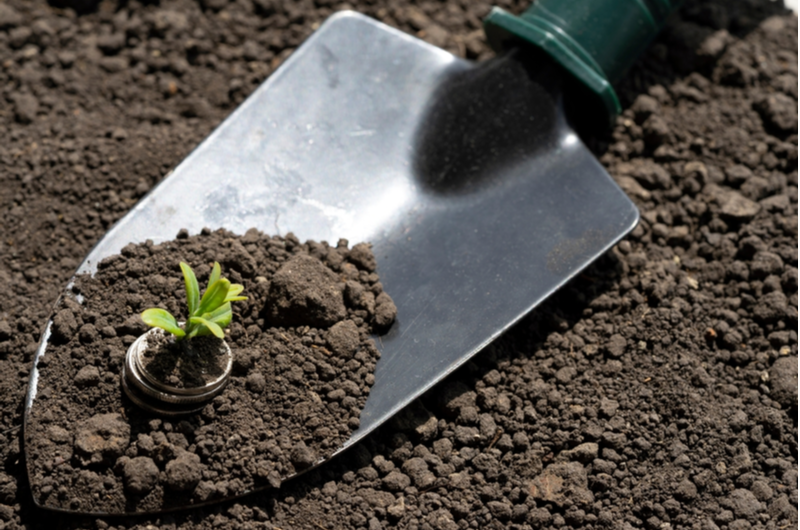How To Get A Farming Loan
Do you have or want to purchase a farm? Discover how a farming loan can help you cover necessary costs and what types of loans are available.
Becoming a farmer is a difficult process. Typically, it requires a good combination of physical strength, endurance, and ingenuity. It also requires a working knowledge of how to care for animals and plants. Networking with experienced farmers or working on a farm that is already operational can also help a new farmer become more confident. However, none of those skills and experiences can help with the financial aspects of farming.
Purchasing and operating a farm is an expensive undertaking. There can be many financial twists and turns along the way. Some of them you may expect. Others may come as a total surprise. Regardless, you may find yourself in need of extra funds to keep your farm afloat at some point. There are multiple farming loans available that may help you in such a situation. It is important to pick the one that is right for you. Here is information on when and how you can select a farming loan.

What is a Farming Loan?
A farming loan is a loan provided for the specific purpose of encouraging farmers to operate farms and helping them do so successfully. Farming loans are available for new family farmers, as well as established farmers in need of extra financial assistance. A United States Department of Agriculture (USDA) division called the Farm Service Agency (FSA) provides farming loans to farmers. Many traditional lenders also offer FSA-approved farming loans.
Unlike a standard personal or home loan, a farming loan has certain requirements. Funds from a farming loan are used specifically to purchase or improve farms. They also have maximum interest rate caps that keep long-term interest costs for farmers low. Loans lasting less than five years have a maximum interest rate of 6.75 percent plus the secured overnight financing rate (SOFR). Long-term loans have a maximum interest rate of 5.5 percent plus the five-year treasury note rate.
What Are Some Reasons You May Want to Get a Farming Loan?
As a farmer, you can opt to apply for a farming loan for many different reasons. A common purpose for such loan funds is to purchase a farm in the first place. The funds can help you get your farm started, if you do not already have enough money saved to do so on your own. You can also apply for various types of farming loans based on your ongoing farming needs. For example, you may wish to:
-
Expand Your Existing Farm Property
-
Purchase Equipment
-
Purchase Livestock
-
Make Emergency Farm Repairs, Such as After a Tornado or Major Storm
What Are the Benefits of Getting a Farming Loan?
Farming is an up and down business. It is often seasonal and always volatile. Crop and livestock prices fluctuate frequently. You may find yourself with sudden expenses for which you cannot easily pay. Through slow seasons, poor market conditions, or other cash flow issues, a farming loan can help your farm stay operational and relieve a certain amount of stress.
Another benefit of getting a farming loan is the ability to use that money to stay ahead of your competition in various ways. You could hire extra farmhands, purchase more livestock, or expand the types of crops you grow using the money you receive. Those types of expansions can help your farm grow when other farms may flounder. You might also opt to use farm loan funds to create advertising campaigns to drive customers to your farming operation.
A farming loan is also potentially beneficial if you already have one. That is because a newer farming loan may have a lower interest rate. You can refinance to take advantage of that interest rate. However, refinancing is not a decision to make in haste. Sometimes the fees associated with the process make it a poor decision.
What Types of Farming Loans Are Available?
If you want a farming loan, you may wonder which types are available. There are several options. It is important to apply for the type that suits your plans and needs. Here are some of the most popular farming loan types:
-
Farm Ownership Loan funds are used to purchase new farms. Funds from such loans are also frequently used to expand existing farms. Water and soil conservation costs are also covered using farm ownership loans. Up to $600,000 is provided through a farm ownership loan.
-
Farm Operating Loan funds of up to $400,000 per loan are available. They cover operational costs for existing farms. Common uses for farm operating loan funds include making minor repairs, livestock purchases, and equipment purchases.
-
Farming Microloan funds are available for smaller farming operations. Such loans are easier to obtain. They allow farmers in specific markets, such as hydroponics or organic produce production to expand or maintain their business operations easily.
-
Emergency Farming Loans exist to help farmers when situations beyond their control arise. Typically, those situations are natural disasters like floods or tornadoes. They can also include the imposing of temporary quarantines.
-
Tribal Farming Loans help Native American farmers preserve farming lands.
What Are the Average Payment Sizes on Farming Loans?
The payment sizes for farming loans vary. To determine the size of each payment you must make on your loan, the best option is to use a farming loan calculator like this one. To do so, you must enter the amount you plan to borrow. Then you need to enter the interest rate, loan term, and payment schedule. For example, some loans require you to make payments monthly. Others require quarterly or annual payments. Your lender can also provide you with minimum payment requirement information when you apply for your farming loan.
How Do You Apply for a Farming Loan?
To apply for a farming loan, you must fill out an application with the FSA or your private FSA-approved lender. To get approved, you must meet minimum requirements. For example, you cannot have any prior convictions for growing controlled substances. You must also pass a credit check. As part of the application process, you must also present records of your assets and debts. Once approved, you can access the funds you need to purchase or improve your farm, as needed.



